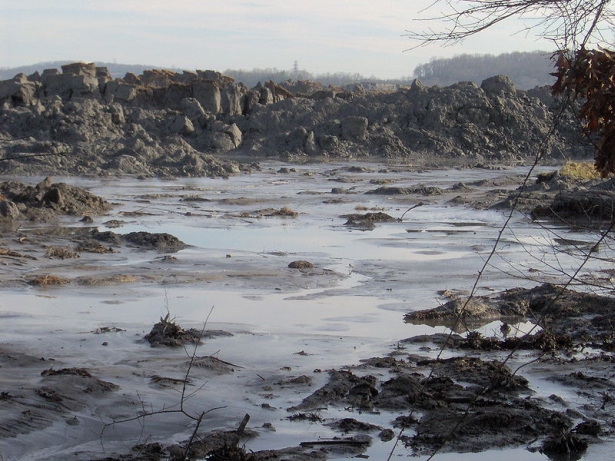For the 193 national delegations gathering in Copenhagen for the U.N. Climate Change Conference in December, the reasons for concern about climate change vary widely. For delegations from low-lying island countries, the principal concern is rising sea level. For countries in southern Europe, climate change means less rainfall and more drought. For countries of East Asia and the Caribbean, more powerful storms and storm surges are a growing worry. This climate change conference is about all these things, and many more, but in a very fundamental sense, it is a conference about food security.
We need not go beyond ice melting to see that the world is in trouble on the food front. The melting of the Greenland and West Antarctic ice sheets is raising sea level. If the Greenland ice sheet were to melt entirely, sea level would rise by 23 feet. Recent projections show that it could rise by up to 6 feet during this century.
 Rice harvesters in Vietnam. Photo courtesy jeremysabol via Flickr The world rice harvest is particularly vulnerable to rising sea level. A World Bank map of Bangladesh shows that even a 3 foot rise in sea level would cover half of the riceland in this country of 160 million people. It would also inundate one third or more of the Mekong delta, which produces half of the rice in Vietnam, the world’s number two rice exporter. And it would submerge parts of the 20 or so other rice-growing river deltas in Asia.
Rice harvesters in Vietnam. Photo courtesy jeremysabol via Flickr The world rice harvest is particularly vulnerable to rising sea level. A World Bank map of Bangladesh shows that even a 3 foot rise in sea level would cover half of the riceland in this country of 160 million people. It would also inundate one third or more of the Mekong delta, which produces half of the rice in Vietnam, the world’s number two rice exporter. And it would submerge parts of the 20 or so other rice-growing river deltas in Asia.
The worldwide melting of mountain glaciers is of even greater concern. The World Glacier Monitoring Service in Switzerland has recently reported the 18th consecutive year of shrinking mountain glaciers. Glaciers are melting in the Andes, the Rocky Mountains, the Alps, and throughout the mountain ranges of Asia.
It is the disappearing glaciers in the Himalayas and on the Tibetan Plateau that are of most concern, because their ice melt sustains the flow of the major rivers of India and China — the Indus, Ganges, Yangtze, and Yellow rivers — during the dry season. This ice melt thus also sustains the irrigation systems that depend on these rivers.
Yao Tandong, one of China’s leading glaciologists, who predicts that two thirds of China’s glaciers could be gone by 2050, says “the full-scale glacier shrinkage in the plateau region will eventually lead to an ecological catastrophe.”
It will also lead to a humanitarian catastrophe. China is the world’s leading producer of wheat. India is number two. (The United States is third.) In contrast to the United States, most wheat grown in China and India is irrigated. With rice, these two countries totally dominate the world harvest. The projected melting of these mountain glaciers in Asia represents the most massive threat to food security the world has ever seen.
The prospects for the harvests of wheat and rice, in these two countries, each with over a billion people, are of concern everywhere. We live in an integrated world food economy, one where harvest shortfalls anywhere can drive up food prices everywhere.
Rising temperature also directly affects crop yields. In a study published by the U.S. National Academy of Sciences, an international team of scientists confirmed the rule of thumb emerging among crop ecologists that for each 1 degree Celsius rise in temperature above the norm during the growing season, we can expect a 10 percent decline in wheat and rice yields. In a world with limited grain stocks — a world that is only one poor harvest away from chaos in grain markets — a crop-shrinking heat wave in a major grain-producing region could lead to politically destabilizing food shortages.
The delegates are gathering in Copenhagen against a backdrop of spreading hunger. For much of the late 20th century, the number of hungry people was declining, but it bottomed out in the late 1990s at 825 million. It then turned upward, reaching 870 million in 2005 and passing one billion in 2009. The combination of rising seas, melting glaciers, and crop-withering heat waves could push these numbers up even faster, forcing millions more families to try and survive on one meal a day.
We are in a race between political tipping points and natural tipping points. Can we cut carbon emissions fast enough to keep the melting of the Greenland ice sheet from becoming irreversible? Can we close coal-fired power plants fast enough to save at least the larger glaciers in the Himalayas and on the Tibetan plateau? Can we head off crop-withering heat waves of ever greater intensity? These are food security issues. This is what Copenhagen is about.
More information can be found in Chapter 1: “Selling Our Future” and Chapter 3: “Climate Change and the Energy Transition,” available for free downloading.
Additional resources at www.earthpolicy.org/index.php?/plan_b_updates/2009/update84




